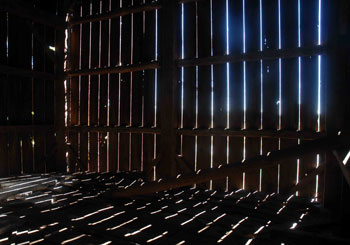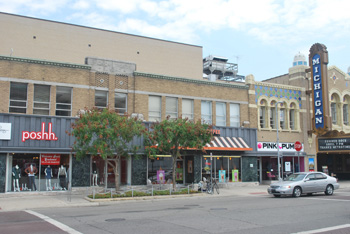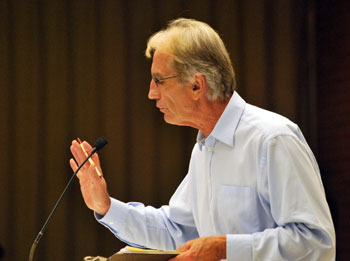By now, most Chronicle readers are likely weary of reading about the controversy involving Heritage Row versus City Place – two proposed developments for Fifth Avenue south of William Street. For my part, I am certainly weary of writing about it. [timeline]
By way of brief recap, Heritage Row was a planned unit development for the site, which would have preserved a row of seven houses to historic district standards (in the version presented to the city council in summer 2010) and constructed three apartment buildings behind them. City Place is a “matter-of-right” project that will likely start construction in the next few weeks. [Most recent Chronicle coverage: "Chapter Added to Fifth Ave. Historic Saga"]
Why will we likely see the demolition of those seven houses instead of their preservation in some form? At the city council’s Oct. 24 meeting, Christopher Taylor (Ward 3) called it a failure by the city council to reach a compromise – on something that was less than ideal, but still reasonable.
The functioning of the city council as a body is an issue that has emerged as part of the Ward 2 city council race this year, which is being contested between independent Jane Lumm and Democratic incumbent Stephen Rapundalo. Lumm served on the council in the mid-1990s and has faced criticism from Rapundalo for being part of a group that he contends was characterized by brinksmanship and an inability to work constructively despite disagreements.
The functioning of the city council as a body is one of the themes of a email message written earlier today to members of the city council by Larry Kestenbaum. As far as I’m aware, Kestenbaum is not involved in the campaign of either Ward 2 candidate – that’s not his home ward, and he is not listed as a supporter on either of the candidates’ websites. In any case, the specific point of his email message was about the demolition of the seven houses on Fifth Avenue.
Kestenbaum is known to many in the community as the Washtenaw County clerk, an elected position. But he was not writing to the council as the clerk. He’s also an attorney who has a degree in land use and historic preservation from Cornell University. He served on Ann Arbor’s historic district commission in the 1990s. Also in that decade, he taught a course in historic preservation law at Eastern Michigan University. He lives in Ann Arbor.
Though his message to the council comes now, after the decisions on the South Fifth Avenue development seem to have finally been made, Kestenbaum did not exactly come late to the party as far as expressing his views on that area of the city. Writing on the now defunct ArborUpdate in August 2008, Kestenbaum stated: “I’d redesignate all of the former individual historic properties that were left unprotected after that bad court decision on 9/11/2001. And I think the area immediately south of William Street, along Fifth and Hamilton for example, should be a [historic] district.”
I think Kestenbaum’s recent email is unlikely to persuade any member of the council to take the action he suggests. But in my view, it’s a particularly well-written exposition of the idea that a city council is fairly judged by what it accomplishes as a body, not by the individual actions of its members. I think it’s important to preserve that exposition in The Chronicle’s archives.
It’s also important to preserve in the archives if it turns out that Kestenbaum’s message does manage to convince the council to set a process in motion to establish a historic district for the area.
And that’s why we’re sharing it with readers. Kestenbaum’s message begins after the jump. [Full Story]






